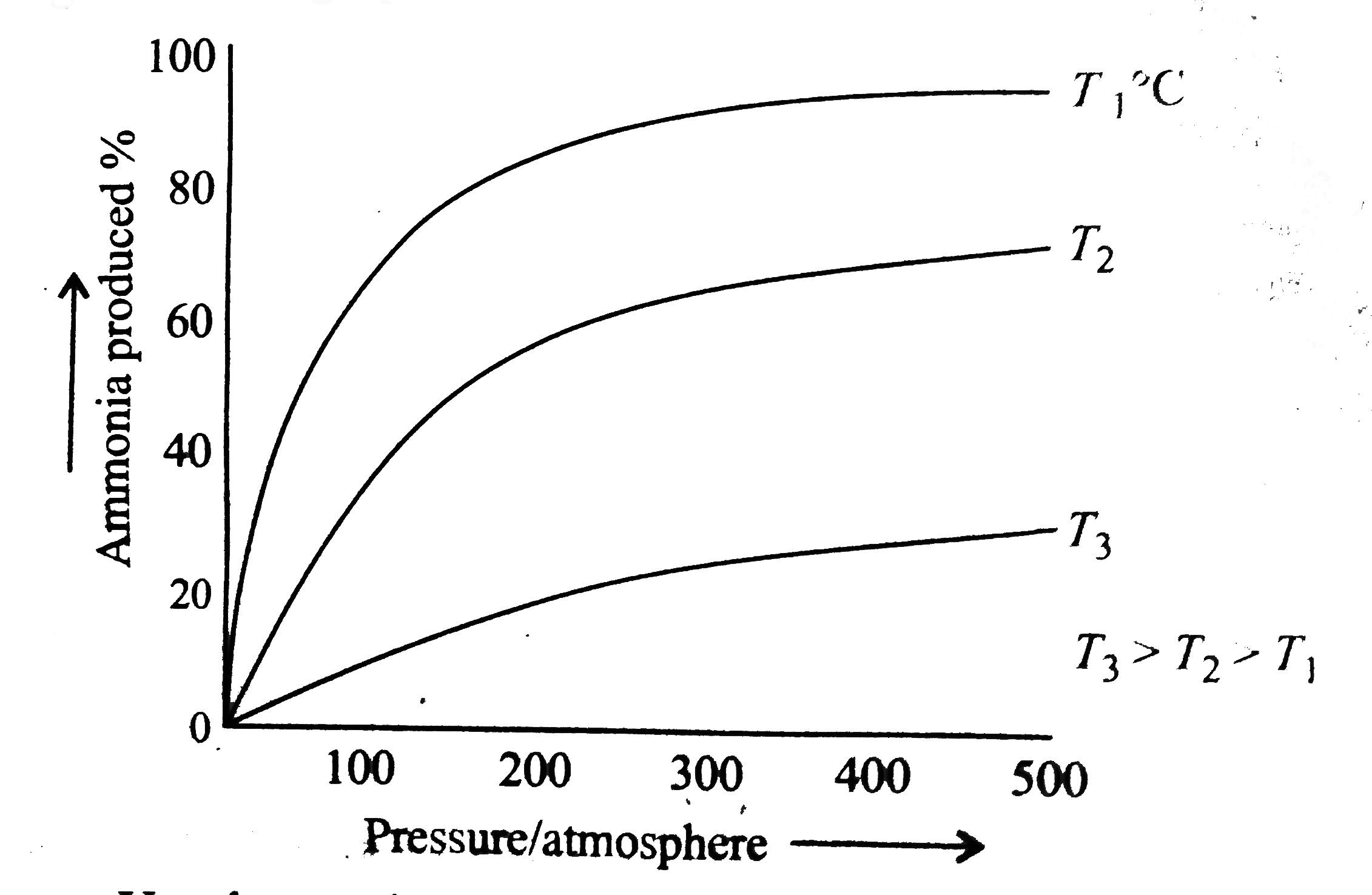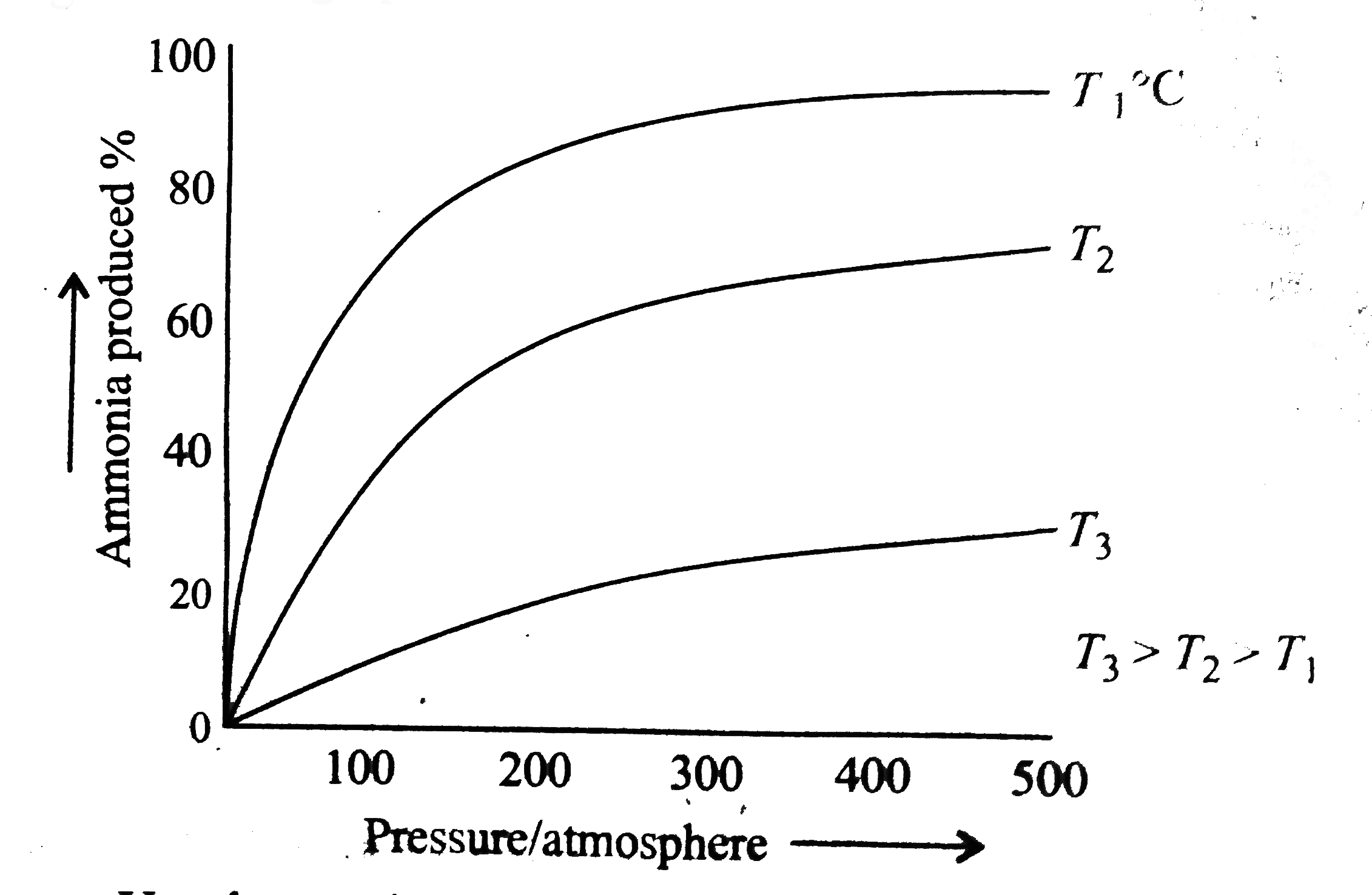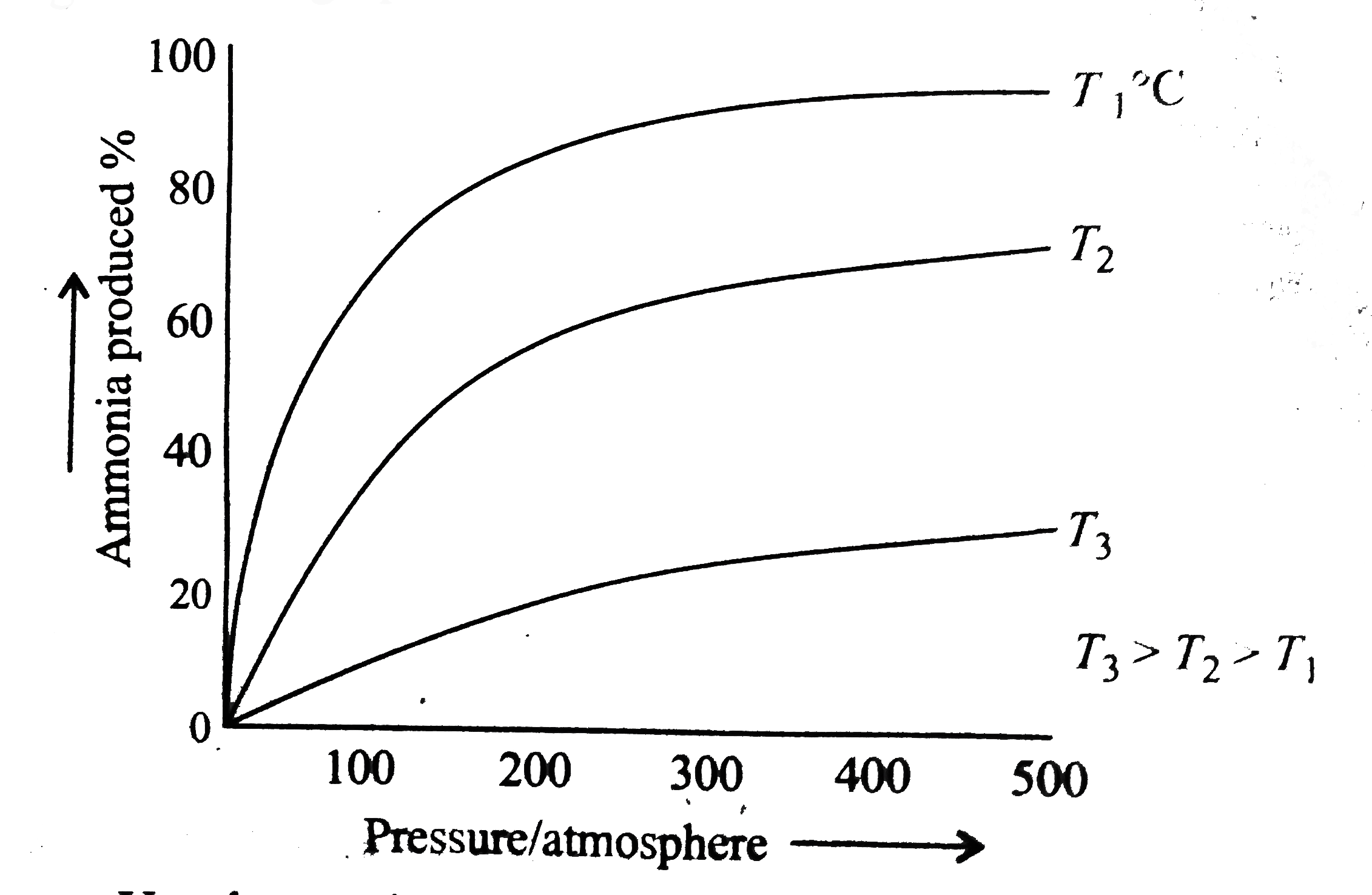Ammonia dissociates to give nitrogen and hydrogen . What happens if the pressure is increased on the system at equilibrium ?
To solve the question regarding the dissociation of ammonia and the effect of increased pressure on the equilibrium, we can follow these steps:
Step 1: Write the Balanced Chemical Equation
The dissociation of ammonia (NH₃) can be represented by the following balanced equation:
2NH3(g)⇌N2(g)+3H2(g)
Step 2: Count the Moles of Gases on Each Side
In the balanced equation:
- On the left side (reactants), we have 2 moles of NH₃.
- On the right side (products), we have 1 mole of N₂ and 3 moles of H₂, which totals to 4 moles of gas.
Step 3: Analyze the Effect of Increasing Pressure
According to Le Chatelier's Principle, if the pressure of a system at equilibrium is increased, the system will respond by shifting the equilibrium position to the side with fewer moles of gas in order to counteract the change.
Step 4: Identify Which Direction the Equilibrium Shifts
Since we have:
- 2 moles of gas on the reactant side (NH₃)
- 4 moles of gas on the product side (N₂ + 3H₂)
Increasing the pressure will favor the side with fewer moles of gas, which is the reactant side (2 moles of NH₃).
Step 5: Conclusion
Therefore, when the pressure is increased, the equilibrium will shift to the left, favoring the formation of ammonia (NH₃) from nitrogen (N₂) and hydrogen (H₂). This means that the reverse reaction will occur more significantly until a new equilibrium is established.
Final Answer
When the pressure is increased on the system at equilibrium, the reaction will shift to the left, favoring the formation of ammonia (NH₃).
---
The dissociation of ammonia (NH₃) can be represented by the following balanced equation:
2NH3(g)⇌N2(g)+3H2(g)
In the balanced equation:
- On the left side (reactants), we have 2 moles of NH₃.
- On the right side (products), we have 1 mole of N₂ and 3 moles of H₂, which totals to 4 moles of gas.
According to Le Chatelier's Principle, if the pressure of a system at equilibrium is increased, the system will respond by shifting the equilibrium position to the side with fewer moles of gas in order to counteract the change.
Since we have:
- 2 moles of gas on the reactant side (NH₃)
- 4 moles of gas on the product side (N₂ + 3H₂)
Therefore, when the pressure is increased, the equilibrium will shift to the left, favoring the formation of ammonia (NH₃) from nitrogen (N₂) and hydrogen (H₂). This means that the reverse reaction will occur more significantly until a new equilibrium is established.
When the pressure is increased on the system at equilibrium, the reaction will shift to the left, favoring the formation of ammonia (NH₃).
Topper's Solved these Questions
- CHEMICAL KINETICS AND EQUILIBRIUMBOOK - PEARSON IIT JEE FOUNDATIONCHAPTER - CHEMICAL KINETICS AND EQUILIBRIUMEXERCISE - Short Answer Type Questions
10 Videos
- CHEMICAL KINETICS AND EQUILIBRIUMBOOK - PEARSON IIT JEE FOUNDATIONCHAPTER - CHEMICAL KINETICS AND EQUILIBRIUMEXERCISE - Essay type questions
1 Video
- CHEMICAL KINETICS AND EQUILIBRIUMBOOK - PEARSON IIT JEE FOUNDATIONCHAPTER - CHEMICAL KINETICS AND EQUILIBRIUMEXERCISE - Level 3
10 Videos
- ATOMIC STRUCTURE BOOK - PEARSON IIT JEE FOUNDATIONCHAPTER - ATOMIC STRUCTURE EXERCISE - LEVEL-3
8 Videos
- CHEMICAL BONDING BOOK - PEARSON IIT JEE FOUNDATIONCHAPTER - CHEMICAL BONDING EXERCISE - Level 3
10 Videos
Similar Questions
Knowledge Check
The rate of disappearance of ammonia is 3.4 gm/litre sec. when it dissociates to form nitrogen and hydrogen. The rate of appearance of nitrogen will be :
A3.4 gm/litre secB1.7 gm/litre secC0.1 gm/litre secD2.8 gm/litre secThe persentage of ammonia produced from nitrogen and hydrogen under conditions of temperature and pressure is given in the graph

Use the graph answering the following questions:
What happens to the percentage of ammonia produced when the pressure is increased?AThe % is decreasedBThe % is increasedCNo effectDCannot be predictedThe persentage of ammonia produced from nitrogen and hydrogen under conditions of temperature and pressure is given in the graph

Use the graph answering the following questions:
What happens to the percentage of ammonia produced when the temperature is increasedAThe % is decreasedBThe % is increasedCNo effectDCannot be predicted
What happens to the pressure when area on which it is applied increases?
View SolutionIn what ratio is nitrogen and hydrogen required to form ammonia?
View SolutionWhat happens when: BF3 is reacted with ammonia
View SolutionThe persentage of ammonia produced from nitrogen and hydrogen under conditions of temperature and pressure is given in the graph

Use the graph answering the following questions:
What conditions of pressure produce the highest percentage of ammonia?
View SolutionWhat happen at increasing pressure at constant tempreture
View Solution